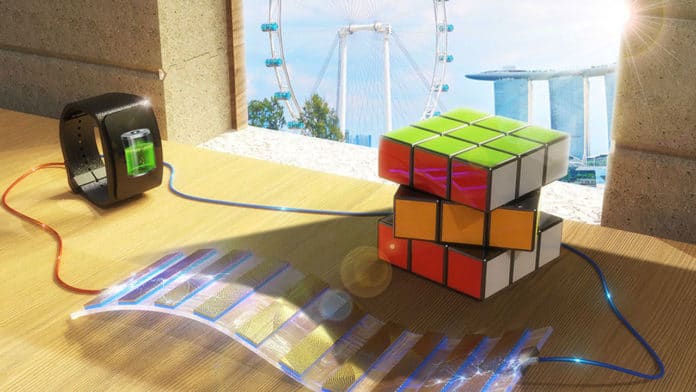A shadow is a dark (real image) area where an opaque object blocks light from a light source. Now, scientists have discovered a new way to use this optical effect to generate electricity. Scientists from the NUS Materials Science and Engineering, as well as NUS Physics, have developed a device called a shadow-effect energy generator (SEG), that uses the contrast in illumination between lit and shadowed areas to generate electricity.
Research team leader Assistant Professor Tan Swee Ching, who is from NUS Materials Science and Engineering, said, “Shadows are omnipresent, and we often take them for granted. In conventional photovoltaic or optoelectronic applications where a steady source of light is used to power devices, the presence of shadows is undesirable, since it degrades the performance of devices. In this work, we capitalized on the illumination contrast caused by shadows as an indirect source of power. The contrast in illumination induces a voltage difference between the shadow and illuminated sections, resulting in an electric current. This novel concept of harvesting energy in the presence of shadows is unprecedented.”
This newly developed SEG performs two functions: (1) to convert illumination contrast from partial shadows castings into electricity, and (2) to serve as a self-powered proximity sensor to monitor passing objects.
It is composed of a set of SEG cells that are arranged in a flexible and transparent plastic film. Each section is a thin film of gold deposited on a silicon wafer. Carefully designed, the SEG can be created at a lower cost compared to commercial solar cells. The team then conducted experiments to test the performance of the SEG in generating electricity and as a self-powered sensor.
Co-team leader Professor Andrew Wee, who is from NUS Physics, said, “When the whole SEG cell is under illumination or in shadow, the amount of electricity generated is very low or none at all. When a part of the SEG cell is illuminated, a significant electrical output is detected. We also found that the optimum surface area for electricity generation is when half of the SEG cell is illuminated and the other half in shadow, as this gives enough area for charge generation and collection, respectively.”
During experiments, scientists found that this SEG is twice as efficient as existing silicon solar cells. The harvested energy from the SEG in the presence of shadows created under indoor lighting conditions is sufficient to power a digital watch (i.e., 1.2 V).
Also, this SEG can act as a self-powered sensor for monitoring moving objects. When an article passes by the SEG, it casts an intermittent shadow on the device and triggers the sensor to record the presence and development of the object.
In future research, scientists will experiment with other materials, besides gold, to reduce the cost of the SEG.
Journal Reference:
- Qian Zhang, Energy harvesting from shadow-effect. DOI: 10.1039/D0EE00825G
